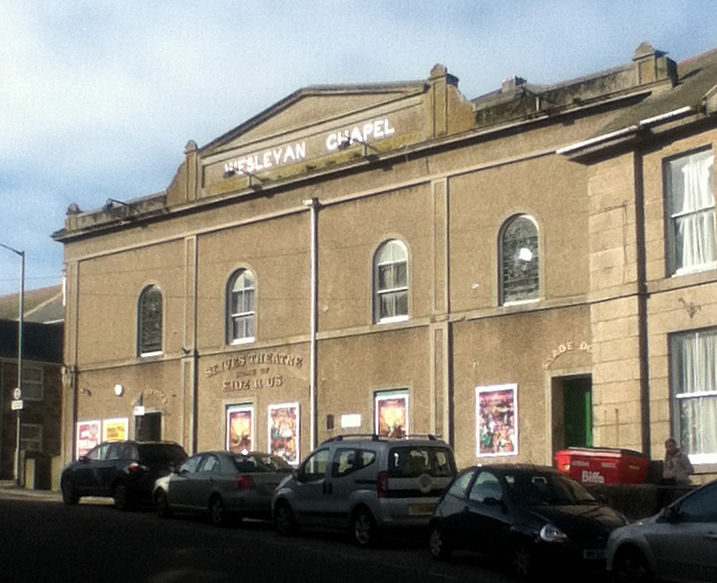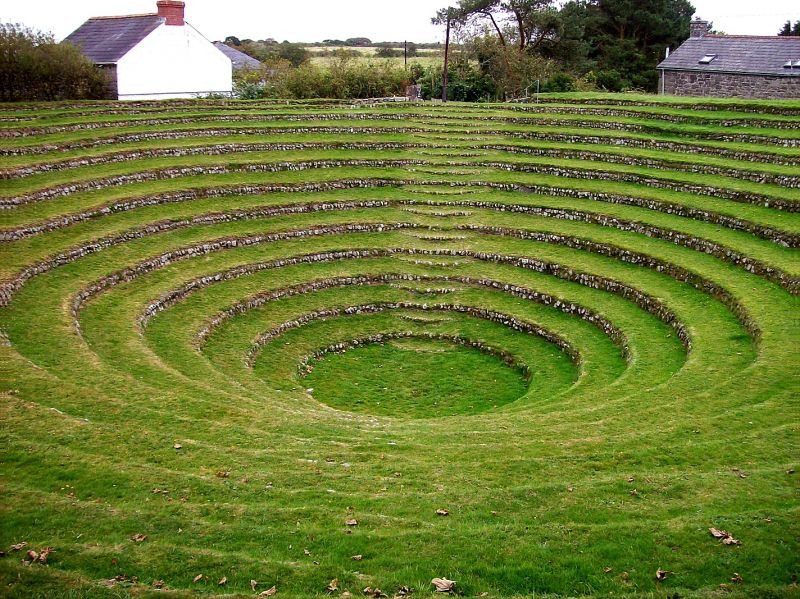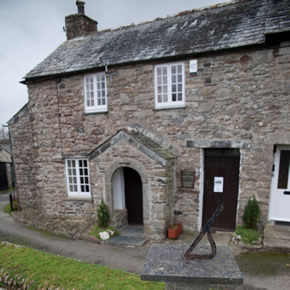Heritage Trail: Early History 1700-1799
On this site stands theoriginal St Ives Wesley Methodist Church, at one time the largest and- arguably –one of the most historically significant Methodist sites in St Ives and Cornwall. It is now home to Cohort and the St Ives Theatre.
The history of these buildings is a complex one as they have been altered, extended and heightened over the centuries.They are part of St Ives’ heritage and was the spiritual home to many local people up until the Methodist church sold the property in the 1999.These buildings are regarded as one of the major Methodist heritage sites closely associated with John Wesley in Cornwall; another two being Trewaint Cottage (Launceston) and Gwennap pit (Redruth).



There are gaps in the historical recordof these buildings. One of the main barriers is that most research has referred to this Wesleyan Methodist Church as it if were one big building, when in fact it is very much three distinctive buildings: Wesley Chapel (St Ives theatre), Wesley Hall (Cohort) and the Wesleyan School (Cohort). Forming an accurate picture of the evolution of the buildings has been difficult.
Whilst the exact location remains elusive it is known that somewhere on the ground floor of Wesley Hall or Wesley Chapel (along Street-an-Garrow) was the location of a meeting house of a local religious society which in the 19th centurybecame the catalyst for the entry of Methodism into Cornwall.
Earliest records from the 1600’s show this site was originally an orchard,with the earliest recorded deed on this site dated 8th Jan 1723 and which refers to a dwelling place and garden called ‘Barbers Dry House’. ‘Barbar’ was a local landowning family and ‘a dry house’ was a place where miners hung their wet clothes after a shift in a local mine.
A local religious society met in this Barbar Dry house from 1723 and turned it into a religious meeting room. The significance of this meeting room became evident in 1743 when John Wesley first entered Cornwall to visit this very site to meet with this religious group. This society became the first Methodist society in Cornwall, and Cornish Methodism was born.Over two centuries this meeting house evolved into a chapel from which the rest of the St Ives Wesley Methodist church complex grew and extended upwards and outwards.
This meeting house was ransacked in 1743 by a mob ‘celebrating’ a British naval victory over the Spanish. At this time people viewed Methodists with suspicion. The house was ransacked in Charles Wesley’s (John Wesley’s brother) presence, after which Wesley satirically observed that the crowd attacked the house ‘for joy that Admiral Matthews had beaten the Spaniards’ adding ‘such is the method of Cornish thanksgiving’!
In 1775 once again the Methodist meeting house was attacked and this time destroyed and a single-storey Chapel was built in its place.
Ten years later this chapel was enlarged towards Chapel Street and was handed over to its Methodist Trustees on 1st Nov 1784, and officially opened in 1785.
When the single-storey chapel was built its front entrance was located along Street-an-garrow which was then the main street out of St Ives(Street-an-garrow in Cornish means ‘Rough Street’). The Stennack main road now at the front of the building was much smaller back then being a mere side street.
John Wesley provided strict construction guidelines for building Wesleyan chapels. For example, sash windows opening downwards were specified ‘…have doors and windows enough and let all windows be sashes, open downwards’, which some believed was to allow local people a quick exit in the days of press-ganging. These original style sash windows are still present on the ground floor of Wesley Hall.
Much debate centres on whether this chapel can be considered as one of the oldest Methodist chapel in Cornwall or not, as it depends upon on how much of the original building must remain for it to be described as so. Whilst this Wesleyan Church has been significantly altered it still contains at least an original door way and walls of its 1785 foundation. Whilst local historians believe that all the four walls of the church were present in John Wesley’slifetime (as records suggest that the later enlargements were made mostly upwards) questions do remain about how much of the original 1785 building survived a later 1825 re-build.
Regardless, this building certainly can claim historical significance if you take into account the history and early foundation of the first Methodist society and the role this site played in establishing Methodism in Cornwall.
However, it is currently not on the list of top places of Cornish Methodist historical interest because of the extensive alterations of the buildings, nor is it recorded as the oldest.
